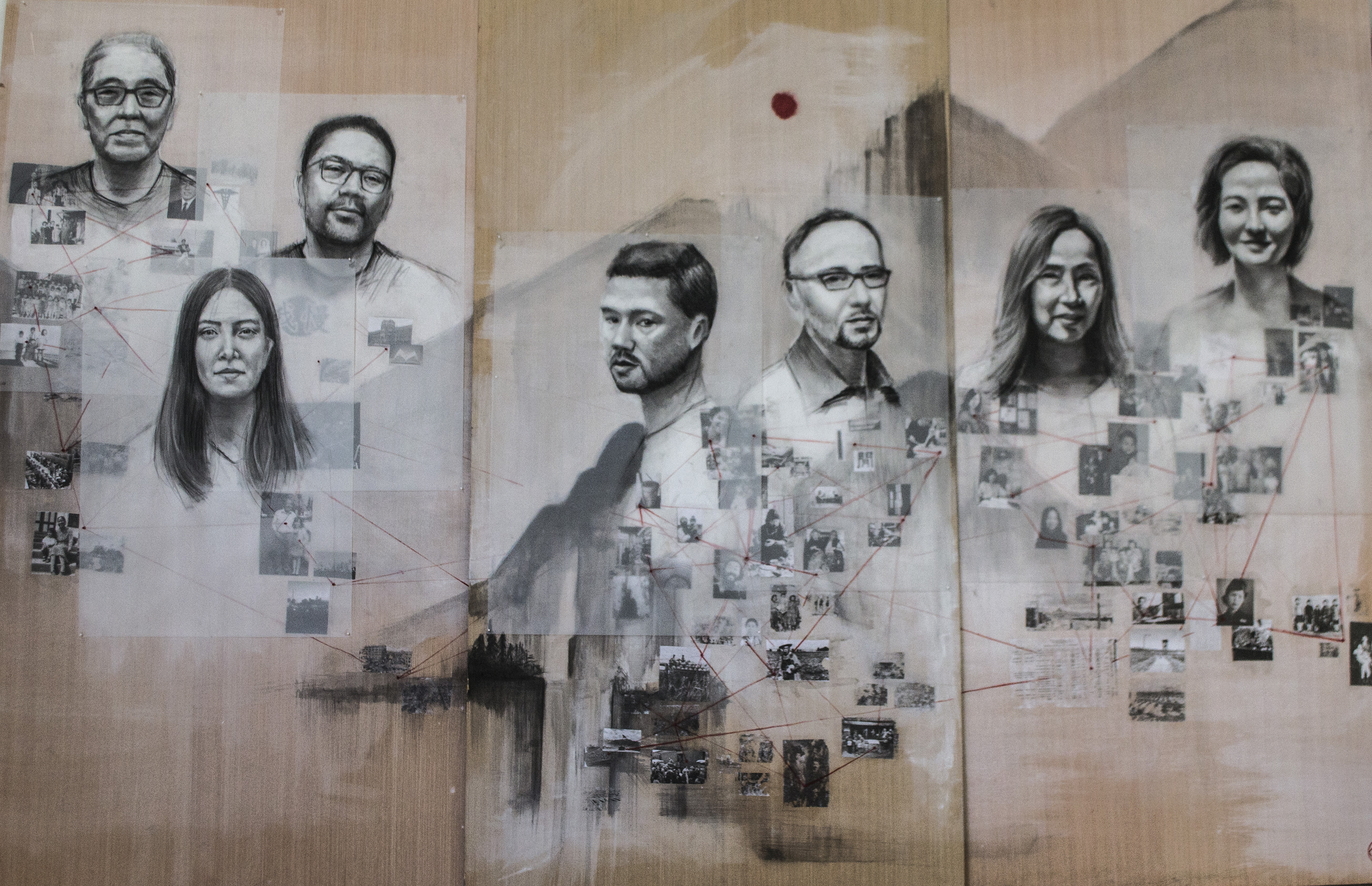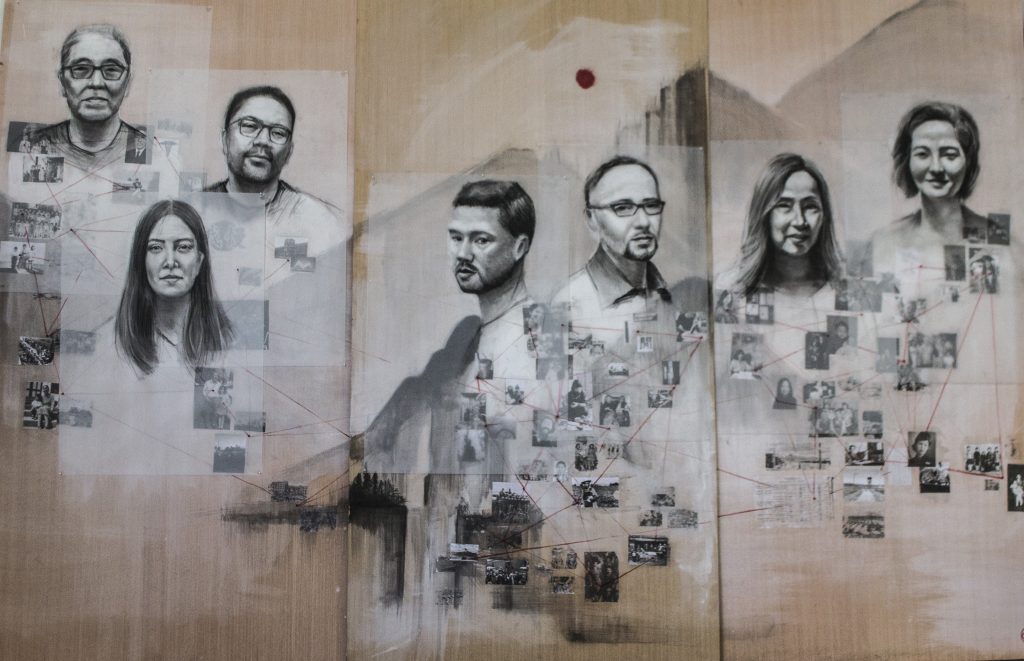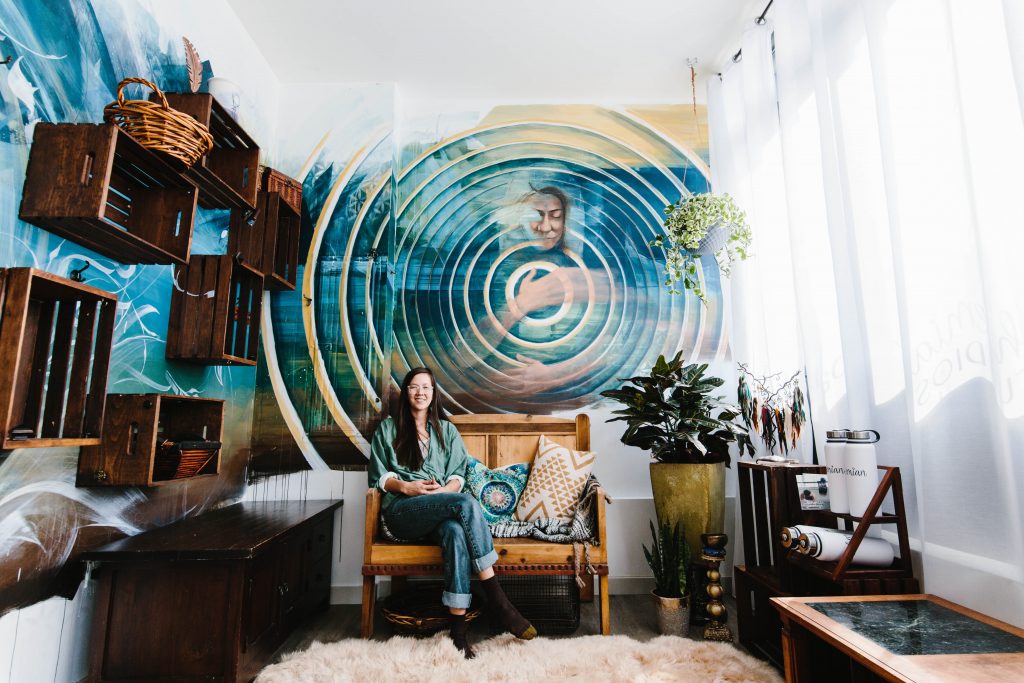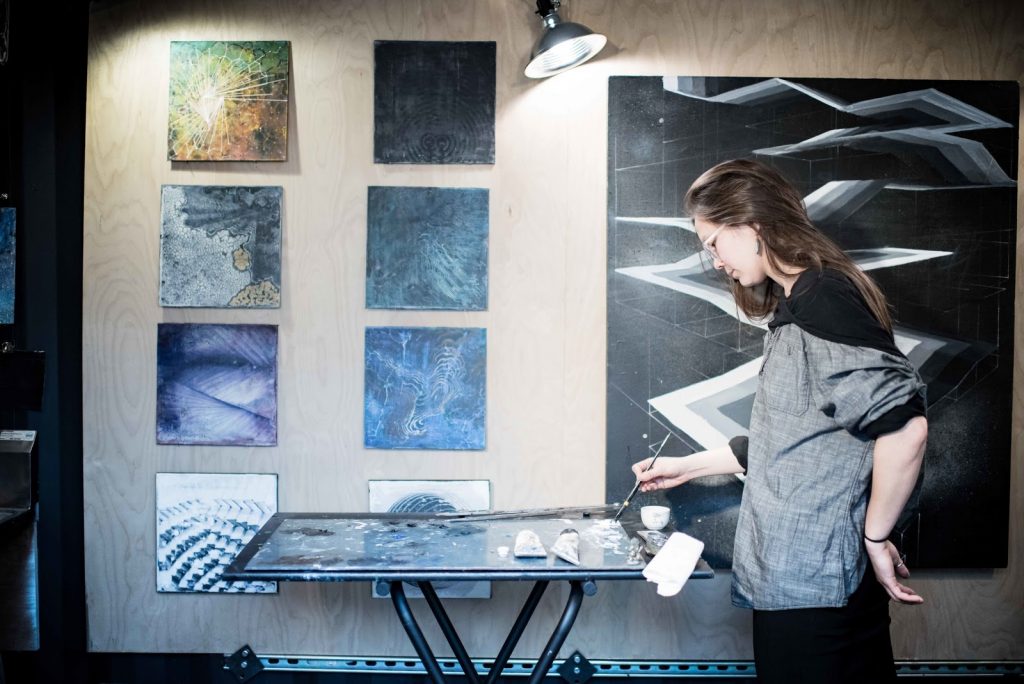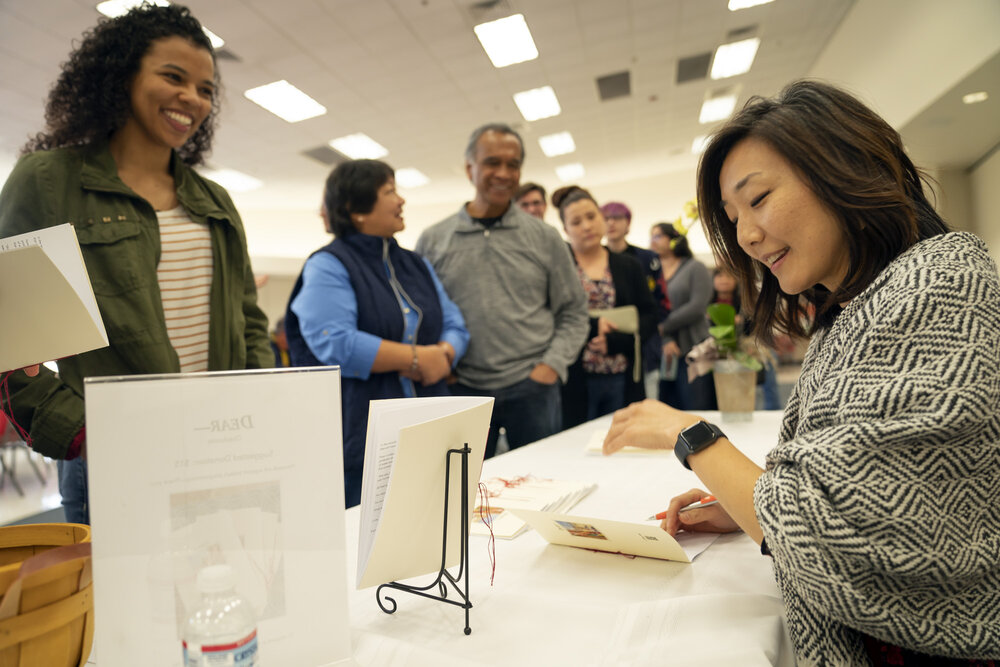Densho’s Artist-in-Residence program supports emerging artists to create artwork about WWII Japanese American incarceration history. The aim of the residency is to help educate general audiences about Japanese American WWII incarceration; connect this history to current instances of racial injustice and inequity; and to foster healing and dialogue around historical memory and intergenerational trauma.
Our 2019 artists were Mari Shibuya, Brynn Saito, and Tara Tamaribuchi.
Mari Shibuya
Mari Shibuya (they/she) is a fourth generation Japanese American who lives and works as a facilitator, muralist, and artist in Seattle. As a facilitator, Mari focuses on the power of creativity, arts-based practices and storytelling as an avenue for empowering individuals to find their voice, create connection, inspire transformation and develop leadership. As an artist, she strives to create work that reflects on our interconnectedness and makes space for us all to contemplate the forces that give rise to our human experience. “We are the lived expression of the migration of our ancestors,” she says. “The decisions they made in response to the times that they existed in birthed the present day we experience and inhabit, physically, psychically and emotionally. They are the roots from which we grow.”
For their 2019 Densho residency, Mari created a piece that charts three Pacific Northwest Japanese American families’ stories. They explain: “The photos featured beneath the portraits outline each families’ origin in Japan, their immigration story, their incarceration story and the process of cultural assimilation into ‘America.’ What aspects of Japanese culture remain to create the culture of what it means to be Japanese American are highlighted in each constellation indicated by the red threads connecting the past to the present.”
These pieces grew out of three Intergenerational Dialogues Mari hosted with Densho in June 2019, and interviews she conducted with each family. “What resulted, portraits of resilience, repression, joy and grief, and the fact that inherent to the experience of being Japanese American is the embodiment of the Japanese concept of ‘Gaman,’ meaning ‘enduring the seemingly unbearable with patience and dignity.’ We heal the past by weaving the pain that our ancestors endured into our lives and holding it, grieving it and celebrating their resilience in the face of adversity.”
Learn more about Mari in this guest blog post and on their website.
Brynn Saito
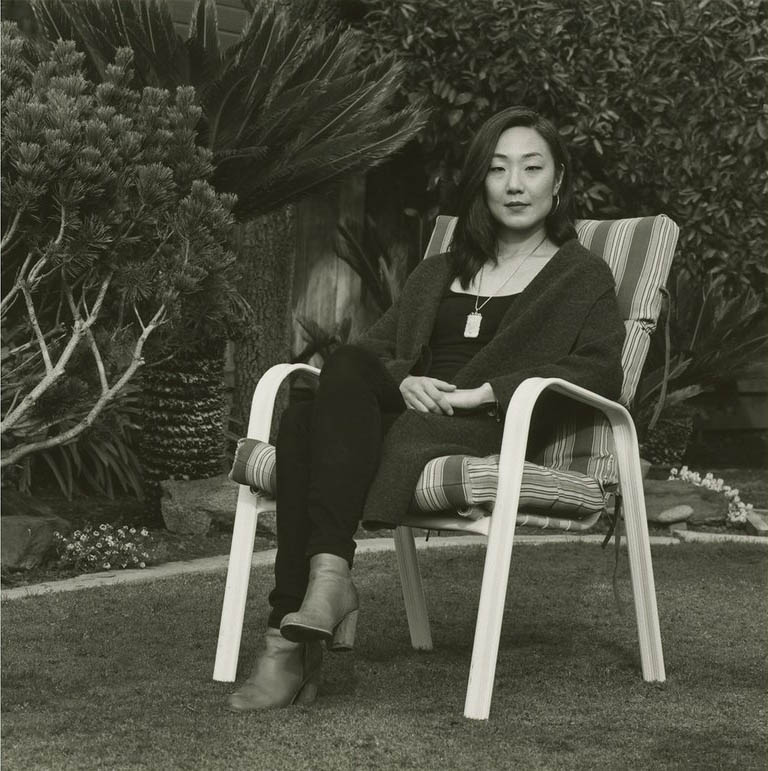

Brynn Saito (she/her) is a Korean American and Japanese American poet, educator, and organizer, born and raised in Fresno, CA. She is the author of two books of poetry, Power Made Us Swoon (2016) and The Palace of Contemplating Departure (2013), winner of the Benjamin Saltman Award, and a finalist for the Northern California Book Award. She also co-authored, with Traci Brimhall, the chapbook Bright Power, Dark Peace (2016). Along with Fresno artist, farmer, and writer Nikiko Masumoto, Brynn co-founded and co-directs Yonsei Memory Project (YMP), utilizing arts-based inquiry to generate dialogue connecting the WWII incarceration of the Japanese American community with current struggles for justice.
Brynn writes, “In the spring of 1942, my grandmother, Alma Teranishi, and my grandfather, Mitsuo Saito, were forced from their homes in California’s Central Valley and sent to a concentration camp built on the sovereign land of the Gila River Indian Community in southern Arizona. They met, married, and had a daughter while imprisoned. Along with approximately 120,000 Japanese immigrants and Japanese Americans on the West Coast of North America, Mitsuo and Alma were imprisoned in yet another massive, illegal violation of freedom in a federally-authorized act later attributed to ‘race prejudice, war hysteria, and a failure of political leadership.’”
During the summer of her residency, almost eight decades after her family’s incarceration, Brynn visited the ruins of the Gila River concentration camp with her father. In the time immediately after that personal pilgrimage, she wrote letters to family and friends reflecting on the legacy of the WWII incarceration. Brynn’s project, Dear —, is a living archive of those letters and responses, and she invites readers to write their own letters as well. In February 2020, Brynn held a community reading and letter-writing workshop commemorating Day of Remembrance and launching the online letter archive and a chapbook of poems, images, and letters.
Read the online publication or request a print copy of Dear —.
Learn more about Brynn on her website.
Tara Tamaribuchi
Tara Tamaribuchi (she/her) is an artist based in Seattle, WA. She began her art career as a painter, but after she began making temporary public art, she shifted her practice to work across mediums. Her recent projects have delved into impermanence in parenting, connecting Japanese American incarceration experience to incarceration in the U.S. today, memorializing Gen-X rave and club culture, and questioning the norms of colonial collections of material culture.
Tara used Densho artist funding to support an installation of her “Camouflage Net Project.” As described in the Pacific Citizen, the project featured camouflage netting made with kimono fabric and “was inspired by the history of the Japanese Americans who made camouflage nets for the U.S. Army, as prison labor, during World War II. Tamaribuchi was interested in connecting her handiwork to those who were wrongly incarcerated during the war, transcending time and place to show pride of heritage through the use of kimono fabric.”
“I hope that when people experience these pieces, they learn about the Japanese American incarceration and see the connections with human rights issues of today,” Tara told the Pacific Citizen. “Doing this work has made me realize how interconnected our experience is with people outside of our community.”
Learn more about Tara on her website.
The ArtsFund Multicultural Arts Project and The Seattle Office of Arts & Culture generously provided support for the 2019 artists-in-residence program. Thank you to these local programs for their meaningful impact and for helping us to engage our community through art!
